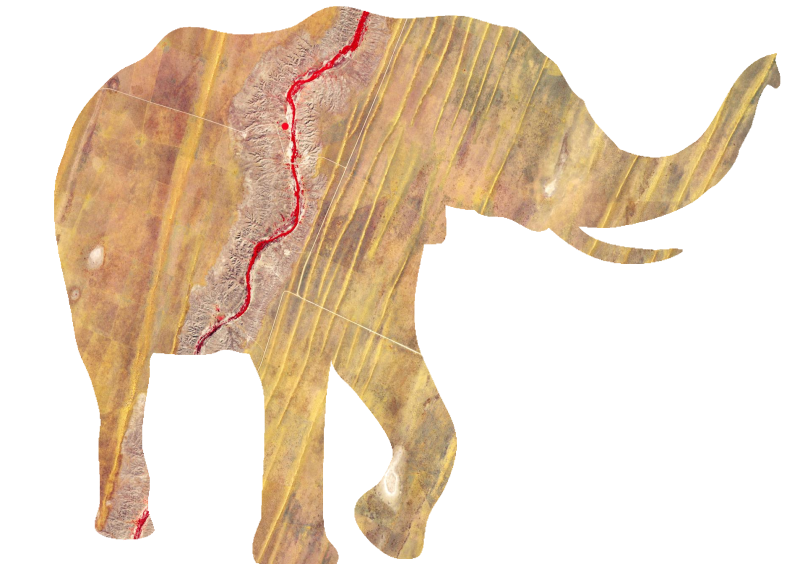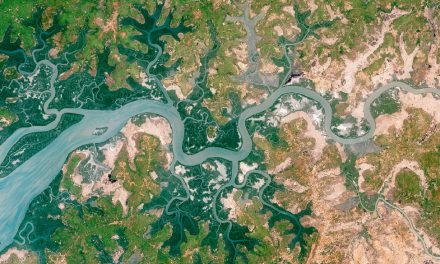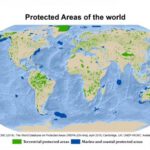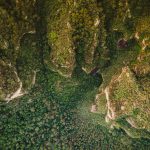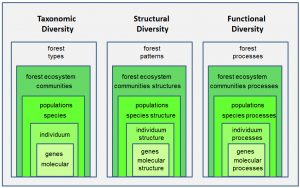
The essential characteristics of diversity in forest ecosystems – Taxonomic Diversity, Structural Diversity and Functional Diversity on different levels of organization in terms of the biotic features of the forest—molecular, genetic, individual, species, populations, communities, biomes, ecosystems and landscapes.
“Anthropogenic stress and disturbance of forest ecosystems (FES) has been increasing at all scales from local to global. In rapidly changing environments, in-situ terrestrial FES monitoring approaches have made tremendous progress but they are intensive and often integrate subjective indicators for forest health (FH). Remote sensing (RS) bridges the gaps of these limitations, by monitoring indicators of FH on different spatio-temporal scales, and in a cost-effective, rapid, repetitive and objective manner. In this paper, we provide an overview of the definitions of FH, discussing the drivers, processes, stress and adaptation mechanisms of forest plants, and how we can observe FH with RS. We introduce the concept of spectral traits (ST) and spectral trait variations (STV) in the context of FH monitoring and discuss the prospects, limitations and constraints. Stress, disturbances and resource limitations can cause changes in FES taxonomic, structural and functional diversity; we provide examples how the ST/STV approach can be used for monitoring these FES characteristics. We show that RS based assessments of FH indicators using the ST/STV approach is a competent, affordable, repetitive and objective technique for monitoring. Even though the possibilities for observing the taxonomic diversity of animal species is limited with RS, the taxonomy of forest tree species can be recorded with RS, even though its accuracy is subject to certain constraints. RS has proved successful for monitoring the impacts from stress on structural and functional diversity. In particular, it has proven to be very suitable for recording the short-term dynamics of stress on FH, which cannot be cost-effectively recorded using in-situ methods. This paper gives an overview of the ST/STV approach, whereas the second paper of this series concentrates on discussing in-situ terrestrial monitoring, in-situ RS approaches and RS sensors and techniques for measuring ST/STV for FH” (Lausch et al., 2016)
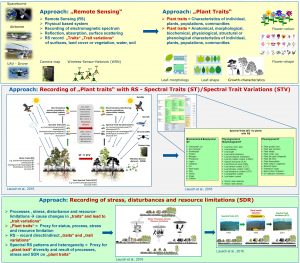
Approach for monitoring stress, disturbances and resource limitations of forest ecosystems / vegetation by remote sensing
Issues of the paper: In monitoring FH, in-situ forest condition surveys and RS based approaches are fundamentally different. As a physically-based system, RS follows regulations, mechanisms and constraints that have to be in the context of FH. The goal of this paper is to demonstrate how RS can be used to monitor and understand FH. To illustrate this, we consider the following research questions:
- How can forest health be defined? Describing of the characteristics of Forest Ecosystem Diversity – taxonomic, structural and functional forest ecosystem diversity. What are its mechanisms, drivers and processes? On which spatial and temporal scales should indicators of forest health be measured?,
- Why and under which conditions are remote-sensing approaches suitable for observing indicators of forest health?,
- What is the concept of spectral traits (ST) and spectral trait variations (STV) for quantifying, monitoring and assessing forest health using remote sensing? Through addressing these questions, we discuss the usability of the ST/STV approach to measure stress and disturbances in taxonomic, structural and functional diversity of FES.
Lausch, A., Erasmi, S., King, D., Magdon, P., Heurich, M., 2016. Understanding Forest Health with Remote Sensing -Part I—A Review of Spectral Traits, Processes and Remote-Sensing Characteristics. Remote Sens. 2016, Vol. 8, Page 1029 8, 1029. doi:10.3390/RS8121029
